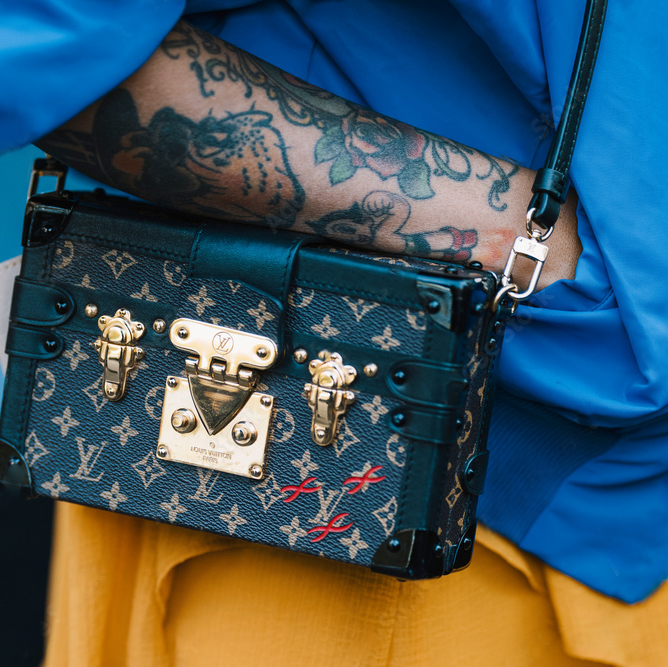
HOW TO BUILD A BRAND?
What does Jesus, Moses, or Mohammed have in common? We know, we know, but seriously hear us out! These individuals are iconic brands. If you look at it from a business perspective, like Gucci, Coca-Cola, or Ralph Lauren and many more Iconic brands have accomplished nearly the same scale of global recognition and respect from others. In most cases the difference lies in the product, message or the value proposition they offer. But for the most part, the process and strategies on how to? are pretty identical. So whether you decide you’re selling a product, spreading an idea, or creating a shared concept, it needs to be something you truly enjoy and have a deep passion for. Building a brand takes time and commitment, which means years of hard work, so if you’re not sold on your concept, it will be difficult to keep going. Ultimately, the goal needs to be to reach the people who appreciate, relate to, and love the concept you represent. Customers who share your brand vision will spread your mission or value proposition to friends and family voluntarily. Remember, word of mouth has always been the most significant and cheapest asset in building a brand. It is important for you to do something that entices others to tell their friends about what your brand is about. Once you accomplish winning the hearts and minds of your customers, then you are on the way to building your brand toward becoming ICONIC.
Note: there are a few courses that will help you clarify certain best practices and information to assess how to build a successful brand.
- Starting a direct to consumer brand sells
- How to start a wholesale distributor brand
- When to announce a launch?
Now let’s dive into the fundamentals of how to build a brand. To make it easily consumable we will break it down into segments.
5 BRAND FORMULA YOU NEED TO MASTER
- Brand Identity
- Brand Mission Statement
- Brand Value Proposition
- Brand’s Slogan
- Brand Logo
BRAND IDENTITY
A brand identity means your business is easily recognizable because of the personality created by your brand. A recognizable association could either be related to designs used to market or associated with the mission. Think about it in terms of a brand’s image. The goal should always be to build a brand that invites respect, but it is even more than just that aspect.
Take the fashion industry for example since we all wear clothes and are familiar with many of the brands built in this industry. If you’ve created a style that is unique with a particular type of print or perhaps a unique logo, then it is easy for someone to identify it. A couple of examples will be:
- Ralph Lauren’s: Americana preppy
- Gucci’s: creative and artistic
- Adidas: cool and hip
- Nike: elite athletic shoes
- Gatorade: best for athletes
This is what you called brand identity. Every brand building technique is different and also how they convey their brand identity. But ultimately those who have done it well will have customers recognize their products within a microsecond. BTW, ya microsecond recognition is a thing just FYI in case you didn’t know.
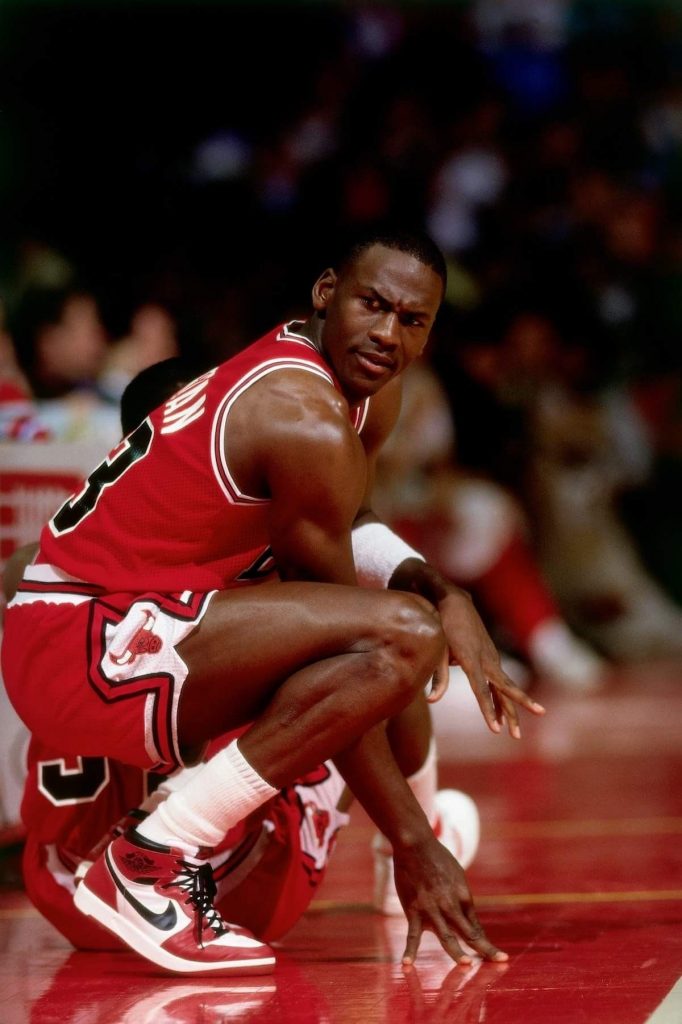
BRAND MISSION STATEMENT
What is your brand’s mission statement?
A Brand’s mission statement is something that will articulate why you as a founder think it’s important to start this brand. When you first start building your brand, if your brand has a mission statement, it can easily resonate with like-minded customers whose value in life aligns with your Brand’s mission. Timing is everything when it comes to building a brand mission statement. What do we mean by timing? We’re simply talking about something very personal or a global issue on hand we humans are concerned about right now at this point & time. The two distinct way of looking at creating a brand statement will be :
- Personal: will be due to the love of art and design. It can also be something you’re passionate about yet has personally affected you. Such as illness or visiting a region in the world that inspired you. Which you now can articulate and build your brand around it.
- Global Issue: it can be issues that threaten us, humans, in a negative way that you are trying to improve by building a brand that will move the needle. Issues like :
- Global warming, so you create products sustainably made
- Ethically made, making sure the brand you hire to create a product pays their employees a fair wage, NO SWEATSHOP
- The list goes on…
Pick a brand mission and articulate what it is that you want to achieve or be known for. We will discuss more as you read using examples of brands who have managed to build their brand successfully and what it looks like when it’s executed well. Keep one thing in mind as we go into this next segment, make sure your brand mission statement feels personal, never corporate.
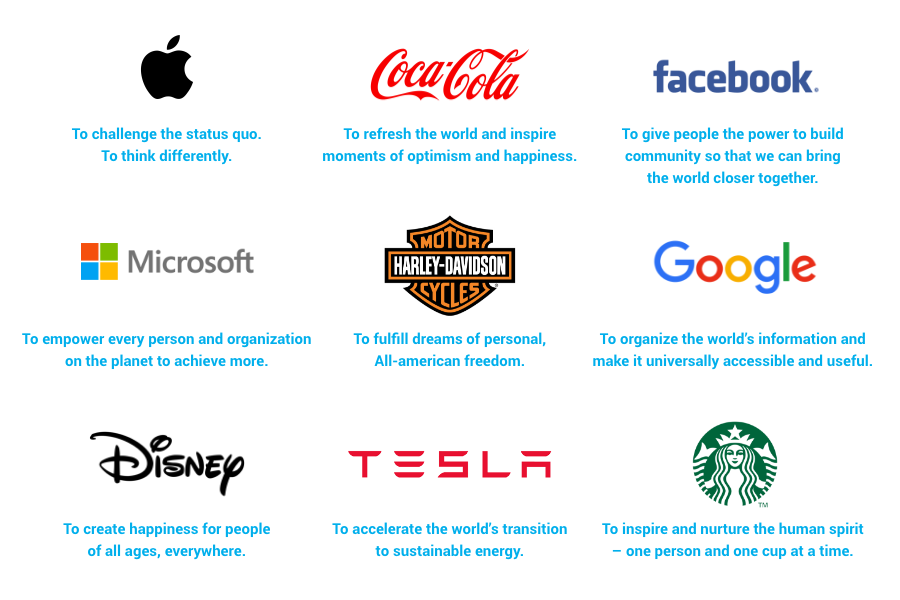
How to create a brand mission statement?
Remember all those essays you’ve had to write defining ideas for your high school English teacher back in the day? Well, think of the mission statement as the essay to define your brand’s ideals. To create a mission statement, you have to understand what it is that you’re bringing to customers as we mentioned above, which will impact their lives most positively.
Articulate your brand’s mission statement on the common ground you and your potential customers share. Think of fashion brands like Reformation or Patagonia. These are brands associated with sustainability, but each celebrates a different facet of life–feminine silhouettes or the outdoor lifestyle. Most who follow Reformation or Patagonia believe in sustainability as a worthy mission but have very specific clothing needs.
Here is a snapshot of a few brand mission statements to give you an insight into what it’s all about and how well they articulate what they do without going over the board.
- Reformation: sustainably sourced and made clothing with low carbon emission
- Patagonia’s: Build the best product, cause no unnecessary harm,
- Warby Parker: higher-quality, better-looking prescription eyewear for half the price
- TOMS: promise to deliver a pair of free shoes to a child in need for every sale
- Everlane: Exceptional Quality. Ethical Factories. Price transparency.
- & the list goes on
Create a mission statement and use it as a bridge between your product and your customers. This is the beginning of what brand building is all about. Your brand’s mission statement either comes to you quickly, considering there are always issues you feel passionately about, or it may require time to self-reflect and time to achieve a meaningful connection to your business. Eventually, you will come up with a concept that has a deeper meaning to you and your brand-building purpose.
BRAND VALUE PROPOSITION
What is a brand value proposition?
A value proposition in brand building has to do with why your product is the better choice than your competitor(s). In a sense why do you need a brand value proposition? Why not just market it and sell right? Wrong, if you don’t have an enticing brand mission but if it’s all about selling then why should a customer spend money with you rather than your competitor(s). This is where a brand value proposition comes in for those who do not have a brand mission statement. Unlike a brand mission statement, a brand value proposition is all about incentivizing a customer to buy your product through better pricing. Remember your brand mission or value proposition is the path to lead you to grow your business, which ultimately means it’s all about increasing sales.
How to create a brand value proposition?
To create a brand value proposition is very much like a brand mission statement, except that it appeals to people’s monetary concerns instead of an ethics mission. The most successful brand that has been able to accomplish defining a clear brand value proposition is the clothing brand, Zara. Zara’s brand’s value proposition uses advertising to say plainly, “Did you see this season’s current fashion trends from all the trending luxury brands? Well here are very similar items at a fraction of the price.”
Another brand that evokes a powerful way to build a brand value proposition message by merging a mission statement with the value proposition beautifully is the brand Everlane.
Everlane’s said their brand’s mission statement is to be “radically transparent” with customers. While their brand’s value proposition articulates what they mean by radical transparency using an infographic page for each item they sell. Everlane’s infographic articulated every product they sell, what it costs them to produce the item and how much they sell it versus their competitors. They show how they value their customer’s time and intelligence by offering honest pricing through this transparent approach. At the end of the infographic, they show a side-by-side price comparison with their competitors to end their brand value proposition on a high note. This is the reason why Everlane has managed to exceed in sales over 100M/yearly in the short time they’ve been in the business.
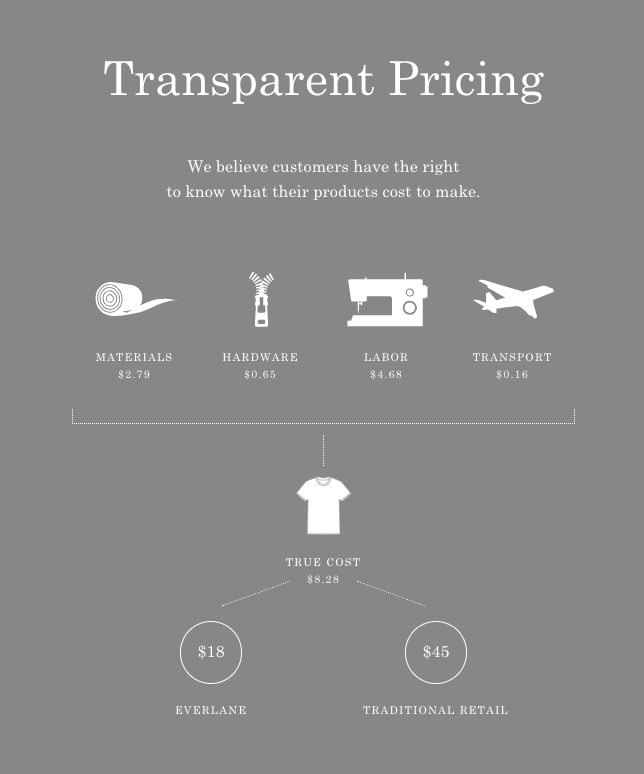
BRAND SLOGAN
Why is a brand slogan important?
Those catchy phrases you associate with a brand name can become iconic and memorable. A brand slogan is a message that pretty much sums up what a brand is trying to promote in either their brand’s mission statement or their brand’s value proposition. A brand slogan is a concise phrase generally between 2 to 5 short words in length. It needs to be memorable and meaningful.
How does a brand slogan benefit a brand?
Bet you’ve heard these brand slogans a thousand times at least:
Apple “Think different.”
Nike “Just do it.”
Coca-Cola “Always Coca-Cola”
McDonald’s “I’m lovin’ it.”
Maybelline “Maybe She’s Born With It, Maybe it’s Maybelline”
A brand’s slogan’s concept stirs our memory as consumers to associate the words with the joyful feeling a product will leave us with. It may get our adrenaline going or make us feel nostalgic…either way, it always serves as a reminder.
Nowadays, some modern brands employ more of a mission-driven brand slogan rather than a complete concept that was used by brands of the past. This is something you as an entrepreneur need to think about and see what will work best in your brand-building strategy. At the beginning stages of brand building, it is common to see your brand slogan evolve as your brand identity emerges. Remember, everything is a process, and keep perfecting it until your gut tells you to stop.
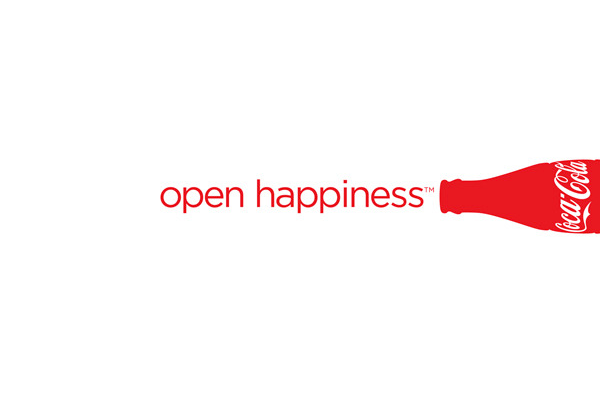
Here are a few modern-day brand slogans, which clearly define and execute what it means to build a brand identity and a brand slogan. Here is some inspiration below from the brand’s slogan we’ve discussed in the brand mission statement above:
AVmade mission: Give small brand owners the opportunity to thrive.
- AVmade slogan: “Inspire and empower entrepreneurs”
Reformation mission: sustainably sourced and made clothing with low carbon emission.
- Reformation slogan: “Being naked is the #1 sustainable option. Reformation is #2”
TOMS mission: promise to deliver a pair of free shoes to a child in need for every sale
- Tom’s slogan: “One for one”
Everlane mission: Exceptional Quality. Ethical Factories. Price transparency.
- Everlane slogan: “Radical transparency”
While you can always enlist the help of a marketing guru to build a brand slogan, you know your customers best. Still, need more of a checklist-style approach to creating a punchy slogan to build a brand?
Here are the top takeaways for creating a brand slogan:
- Power in simplicity. Keep your phrasing short and to the point, so it is memorable and quotable. Make sure your brand slogan is accessible to your ideal customers and stands alone without any images. This means when building a brand slogan, no need for a complicated vocabulary or going crazy with the thesaurus. An older elementary school-age child should be able to read it and understand what your brand is selling without the help of cool graphics. Don’t get it wrong, graphics and infographics are a great added element to share with friends in the hope it goes viral. Just make sure your brand slogan can stand on its own without being dependent on graphics.
- Reference what you do and how you do it. Pair what you are known for creating (or should be) with a reference to what you’re doing to grow or disrupt the industry. Consider what your special spin on the industry is, so you can set your brand apart or give your brand leverage. What your brand produces may also be a feeling or emotion, so don’t feel locked into referencing the items you produce directly.
- Transcend time. Slang is such a generational and trendy language phenomenon that it’s best to steer clear of it when creating a brand slogan. Try to choose wording that is timeless and free of possible negative associations.
Now you have some concepts from both classes of brands–new and classic–so brainstorm as you build a brand which direction will be the right fit for your brand vision.
V. BRAND LOGO
What impact can a logo have on brand building?
A recognizable Brand Logo increases a brand’s recognition. Brand building is all about creating an emotional attachment like everything else we discussed above, and a logo can be a reminder of that. A brand’s logo can entice customers and promote a certain brand image, but above all, it can be memorable. For this reason, a thoughtfully designed brand logo can add value to a brand’s identity.
The concept of adding a brand logo on clothing was to help entrepreneurs who have taken a journey to stand out amidst competitors in a boisterous market. It is important to note that not all brand logos need to be a symbol of some sort, nor does it have to be visible on every item of clothing you create. When building a brand, your logo will not be the reason consumers buy your clothing–you’re not yet branded after all. Until then, you can experiment with reimagining a basic logo concept for a variety of uses. Also remember, we’re a generation that likes clean and simple products since most entrepreneurs sell directly to consumers, all of their brand messages are communicated on their site rather than being plastered all over their clothing.
Some brand logos could just feature your brand name written in simple text with an attractive font. Most contemporary brands today do not use a brand logo on the products to keep the brand aesthetic very clean. Since most brands today selldirect-to-consumers, the need for having their brand logo on their products has become less critical especially for apparel brands. Other apparel brands like beauty, health & wellness and more may still heavily rely on the logo particularly on their packaging. The concept of a brand’s logo nowadays is best used throughout your brand building and marketing efforts such as :
- E-Com tore
- Social media platform
- Social media marketing
- Email marketing
- Packaging boxes
- Thank you letters
- & more
Why does a logo matter?
Let’s go back and forth on a timeline to compare the past and the present why and how a brand logo when building a brand was useful. Imagine in the ’90s when a Ralph Lauren polo shirt was created without the little polo player on horseback. This was a time when direct-to-consumer was not as popular as today, so brand recognition meant everything a brand sells in that era needed to have a distinctive feature to not get lost into the department store floors.
Brands that started ‘back in those days’ (think pre-internet) were very dependent on department stores as the middlemen to sell their brands. Department stores then and still now represent thousands of brands within their space. Most of the time, this meant department stores also had to carry similar items from competitive brands. In this saturated and confined space, shoppers could get lost easily if not for the distinctive brand logos. The brand logo added some value not only for the seller but for the consumer.
Many brands selling similar styles found that they had to scream for attention–their brand logos did all the work. Denim jeans needed all the help they could get, so think of Guess’s triangle patch on the back pocket of denim or a pair of Levi’s jeans with the red tab.
Brands from the ’90s
In the late ’80s-90s, brands like Ralph Lauren set the stage for how to market to the masses during a time when going to the mall was the only hope for finding the latest fashions.
Ralph Lauren’s Polo Logo
Gucci’s double G’s logo
Adidas’s 3 side stripes or three-leaf with stripes
Nike’s Swoosh
Although their logos today are classical and iconic but now thinking about it from this perspective, do you understand the importance of having a brand logo today? for a particular era it made all the difference. But today it’s a different world so make sure if you decide to add a logo on your product, it will be something your buyers will want to wear tomorrow. Here are brands that are leading today in popularity and revenue for you to get an insight into how they use their brand logo :
Reformation
Everlane
Warby Parker
Away
Lola
Harry’s
Glossier
Casper
Julep
Bonobos
Quip
& more
What impact can a logo have on brand building?
- Target Market
- Competition
- Quality Product
- Visual
- Story -Telling
- Network
- Sell
- Learn. Improve. Repeat
- Always Push For More
I. TARGET MARKET
What is a target market?
A target market analysis will give you an insight into who truly makes up your customer base. This will help you build your brand by analyzing and improving your CAC (customer acquisition cost). A Brand’s target market means a gateway to understand your customer’s behavior, age range, areas they reside, income status, hobbies, places they shop, and so much more.
Here are the benefits of how a brand target demographic focuses your overall business’s marketing and growth hack efforts. Whether it is to
- improve CAC (customer acquisition cost)
- make smart advertisement decisions
- improve design assortment
- find the best price point
and many more variables that are used as the best tools when attempting to build a brand.
How does a brand build its target market?
Remember, you don’t have to invade someone’s privacy or find ways to gather information outside of the law to identify these vital statistics. It is ideal for a brand to begin with a survey early on by collecting and creating data sets. Advertising platforms like Google and Facebook will also give entrepreneurs a generalized scope on who has been buying the brand’s products in terms of,
- Behavior
- Interest
- Age group
- Geographic
- Marital status
- & much more
Collecting this data when building a brand is imperative if you want to improve your advertising strategies since it will also give you clarity on your customer. If you run a Facebook ad or Google ad for a while there is data your brand can start to gather to improve its knowledge of the customers you serve.
II. COMPETITORS
How do brands identify their competitors?
Once you know who your brand’s target market includes, it’s time to figure out who your brand is up against. Asking who your brand’s competitors are? Plays a large role in your brand-building success. Understand who truly competes with your brand, as this info will guide and greatly improve many of your brand marketing choices. To build a brand that will one day achieve great success, you will need to know what your competitive brands are doing right, so your brand does it better. Do not ever take your eye off the ball, as many entrepreneurs make this mistake. Always keep an eye on your brand’s direct competitors and stay on top of their every move. Just make sure you don’t get lost in their branding process and forget about your brand. Having an original concept is a must, but rather you are monitoring your competitors to see what is working for them in terms of marketing to leverage their effort to grow your brand. If you are not paying attention to what is working for your competitor’s brand then you will miss out on a great deal of growth opportunity. Also, if you start to think your brand has mastered it or can’t get any better, that is when you start to lose your edge. There are a lot of subscription businesses that can give you the insight you need to help you build a brand with a competitive advantage such as Ahrefs, SEMrush, Spifu, BuzzSumo, and more.
Your brand research effort for competitors will need to slice the pie into many pieces to get a competitive advantage. Need to keep in mind the following,
- Large established brands define the market and already have a large customer base.
- Medium size brands who have been around and disrupting the large established brands
- Small, up-and-coming bands who’re making noise. Remember some of these will be the brands of tomorrow so don’t ignore them. But first make sure they are getting a lot of momentum, so you don’t waste your time on a wild goose chase.
It is essential to note that there are many ways to identify and realize what you mean by who to look at as your brand competitors. Let’s show you how to further segment your competitor as direct competitors and indirect brand competitors:
- Direct competitors. These include both small to large brands who sell a product like and share either your brand mission statement or brand value proposition. They are your direct competitors because your brand mimics their success in your industry and, as a result, are seeking to understand how to build a brand or product that directly competes with them. They have the experience and the success that you want. In the beginning, you will learn from them, and in time, you will understand how to implement their best brand approaches and what their brand weakness is so your brand can become a better alternative to their customers. For now, learn from your direct competitors by taking these tips from their example:
- their creative images on their ads
- their message in their ads
- which ad is getting more momentum
- how is their customer service
- why customers like their brand by reading reviews
- Indirect competitors. These are brands that do not sell the same product as your business nor do they offer the same service as you. What your brands have in common includes the customer base and the way your two brands are attempting to build a brand. It is tough to say whether or not your brand will have the leverage to win the customer’s disposable income over your indirect competitor. This often depends on the necessity of which brand product or service is most prudent to the customer. For example, if your brand sells clothing, but your indirect competitor is wholefoods, then most likely food comes first if they have to choose. But what is great about understanding your indirect competitors is that you continue to have a deeper understanding of :
- Who are your customers?
- Where to find more customers?
- How to best serve them?
- What about these other products is important to them? Ex. if they shop at wholefood, that means organic-based products are important to them &, etc. Who to conduct cross-marketing with & more
How does a brand build its list of competitors?
So this is not always as easy as you may think. The “HOW” part will take time. Your brand will first need to analyze data and conduct a survey. Also in time through marketing and research, you will start to build a comprehensive list.
Initially, it would be best if your brand focuses on direct competitors as you will be more aware of who is peddling the same products and services as your brand. As you expand your business and your marketing budget, your brand then will gather data that will start to point you in the right direction to broaden your brand-building efforts. So as said, start with what you know and build this up slowly.
III. QUALITY PRODUCT
How quality products will benefit creating a brand?
Assessing product quality is an essential part of your business, whether it is apparel, beauty, or any other products. Building a brand with the highest quality products puts you in a category of brands that have the best notoriety in the global marketplace. For example, if we were to ask you to take a look at your closet and try to find, say, two different types of products that show the spectrum of what you consider the quality and not quality, the outcome will be:
- Product #1: the brand is cheaply made and may only la a few wears
- Product #2: the brand lives in your closet, and you can’t get enough of what they do
Now, every time you shop at a brand where you bought product #1, you are aware that their products are tossed after a few wears. You shop there with the expectation of a bargain price and a lack of love for their product.
When shopping for Product #2, on the other hand, you will most likely be shopping with a different mindset. Consciously feeling optimistic when shopping and unlike Product #1 pricing seems justified. You will unconsciously pay more attention to pieces that you love rather than worrying over the price point. This is not to say brand price points do not matter. But what it means is that customers will be more flexible to pay a little extra for products and brands they know who have good quality and continue to keep coming back for more.
The reality is that not all products are made to last forever but if you choose to build a brand with great quality, then you have a greater chance of succeeding. If you choose to sacrifice quality, be ready to drive consumers to the hand of your competitor brand.
IV. VISUAL
How does a visual help to build a brand?
You know the vibe you get walking into a high-end brand store? How does that compare when you walk into a local shop that feels clutter? First brand impressions can be the last, they do set the stage for making a customer feel inspired or joyful when they first visit the brand.
When building a brand the goal is to create a wow factor in every interaction a customer has with your brand experience. When a customer visits your store, that is the first meeting you have with that person. Whether a brand leaves a great impression or not will depend on how the customer began their experience the second they have entered the brand’s space
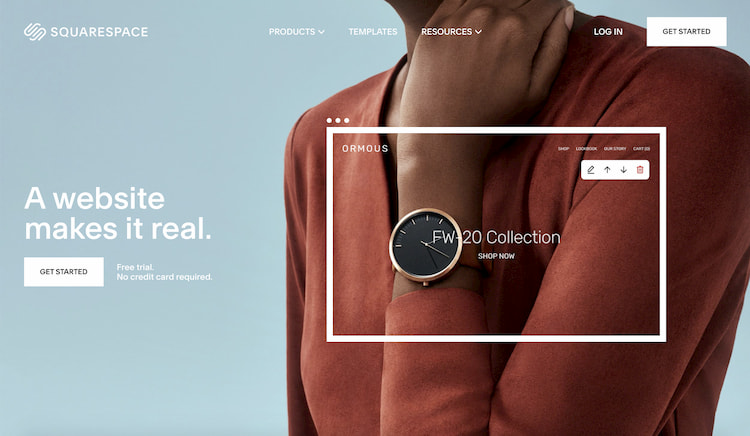
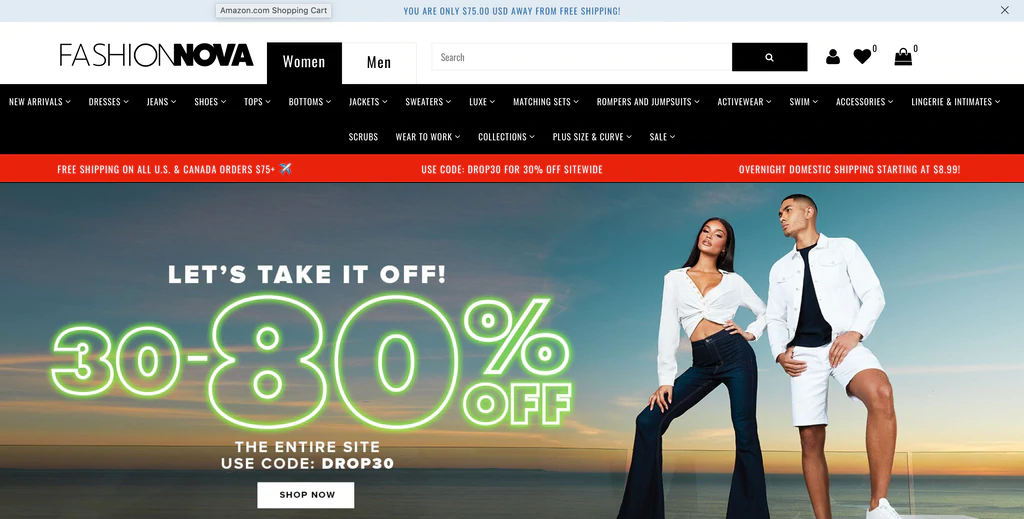
How does a brand build visuals customers love?
Crazy to say this, but it is now effortless and affordable today for a brand to build a Shopify or a Squarespace store for a few hundred dollars that looks amazing. Like everything, developing your visual identity is a process, and gradually you will improve your website as you build your brand.
Here is the list of key concepts you need to embed to visually entice your E-Com store:
- Unify your visuals, so they speak to the audience in a language they can understand.
- Use creativity that aligns with your customer,
- Have great quality pics your customers can relate to
- Make sure everything looks simple to the eye and uncluttered
- If you have a slogan or logo, add it tastefully
- Care about everything in your store
- Never stop working towards improving
- Be obsessive for your store to look better than our competitors
Just don’t get carried away initially to building your website with such complexity by looking at your competitors who have been around for years earning millions in sales. Build a site with a beautiful and clean layout and great visuals to start with. If you find it necessary to excessively spend on a website before you’re able to do MVP (minimal viable product), then good luck. But if you understand what building a brand means having a little patience then allocate your capital strategically. We highly recommend that you build a charming brand website yourself (DIY style), which can quickly be learned over the weekend on Shopify or Squarespace if you’re not feeling too incompetent. If you’re overloaded with other work though, and you need someone else’s help, find a freelancer to take over the website set up initially. That person should be able to build your site on Shopify or square app or a few hundred dollars.
V. STORYTELLING
What is brand storytelling?
Brand storytelling encompasses everything we have talked about, whether it is the brand mission or value proposition. To build a brand an entrepreneur has to be a great storyteller. This is the way you can have a customer resonate with your brand identity. Ultimately when it comes down to it before you start telling a story, you need to have a story to tell. This means work on your mission statement or value proposition and articulates that very well. Building a brand is all about repetition to improve your skills, whether it’s creative or operational. It goes without saying to be a great storyteller, it requires practice like a daily mantra until it becomes second nature to you.
To build a brand, entrepreneurs need to constantly communicate with customers, employees, or interested in learning about your brands -such as the press or investors. If you are not a great storyteller why customers should get behind your brand, then you are giving leverage for your competitor brands.
Also do keep in mind brand storytelling does not end here. The brand storytelling journey continues throughout its store and marketing efforts. Whether you are talking about your:
- messages within your store,
- mission,
- value proposition,
- email campaign,
- copies in your marketing
- & anything else that require words
How important is storytelling in brand building?
To build a brand, entrepreneurs need to constantly communicate with customers, employees, or interested in learning about your brands -such as the press or investors. If you are not a great storyteller why customers should get behind your brand, then you are giving leverage for your competitor brands.
Also do keep in mind brand storytelling does not end here. The brand storytelling journey continues throughout its store and marketing efforts. Whether you are talking about your:
- messages within your store,
- mission,
- value proposition,
- email campaign,
- copies in your marketing
- & anything else that require words
VI. NETWORK
How does networking build a brand?
It has been said in business that your network is your net worth. It’s just another way of saying it’s not what you know, but it’s who you know that can fuel up your growth. Since being able to network is vital to building a brand or a brand’s success, it needs to find its way to the top of your priority list.
There are two types of networking you need to focus on as you build a brand:
- business network
- customer network
Building a business network: includes any connections and relationships with other business owners who either built a brand in the past or currently building a brand just like you. You can use these network groups to bounce ideas off anything business-related feedback or strategies you all have in mind. It is a great place to learn and possibly do mutually beneficial collaborations in addition to brand-building lessons. Sharing experiences and comparing notes when you are on the journey to build a brand is critical on what has worked, what hasn’t, and why. Being a startup is a lonely road for a business founder, that is. You will have many responsibilities, juggle a wide variety of challenges, and most of the time, especially in the beginning, all the decisions will fall on your shoulders. Most of the mistakes, whether it’s made by you or by your staff, will be your burden to carry. It is for this reason that having someone who you could speak to or a group of like-minded entrepreneurs who has been through or going through the brand-building process will be extremely healthy for your mind as well as for your business.
There are many entrepreneurship groups online today that you could join. Apps like “Meet up” where you could find local groups and can meet in person to chat are great resources. Start slowly and build connections with the other entrepreneurs not only to potentially learn how to build a brand but to act as a sounding board for your ideas.
Building a customer network: can rely less on local resources to build a brand in the digital era as long as you have a clear understanding of who your customers are and plan a strong online brand presence to connect with new customers. The customer network is the same as a business network in that it is about exchanging information to take away with you to help you. Except now, you are going to need to attend any events where most of your customers frequent.
This is critical and very helpful for entrepreneurs with a certain brand mission. If your brand building is backed with a cause, you need to be part of the group of customers you’d like to attract. Learn from your potential customers, not as a business owner trying to sell a product, but as a participant, in the lifestyle approach or atmosphere, they are trying to cultivate. Imagine you are building a brand that focuses its energy on making products that are sustainable and stand for all sustainable processes. Now you could find groups who love the concept of sustainability and join to learn why it matters to them. Remember, whether you are forming your brand mission statement, slogan, or marketing copies–it all leads to how informed you are about that space and how fluent your brand messages are when speaking to your customer base.
By becoming a participant in the type of events and communities you are guaranteed to stay ahead of your competitors and truly build a brand that makes a difference. Immersing yourself in these environments when you start, will allow you to broaden your point of view quickly and generate sales. Here’s a little icing on the cake; once you attend these types of events regularly enough to know the mindset and the personalities firsthand, you can infuse that ethos into your products or services. This will enhance the loyalty to your existing customer base and welcome new customers quickly, after all this is what building a brand is all about.
Once you build a brand that sustains itself, you can also talk to event organizers and hosts of these groups to share your brand story. Sharing your mission with others that get it, can foster more strong ties to this group. Customer network groups like these will allow you to successfully build brand credibility. It is also common for most individuals you connected with within these networks to quickly become your brand ambassadors. Most of the time, the individuals who comprise these groups are happy to have someone from their social network accomplish something awesome that moves the mission forward. A familiar face who had to work from the ground up to build a brand and achieve success is always inspirational. Remember, strong relationships take time and authenticity to form, so find your niche and maybe your brand can become that shining example to inspire others.
VII. SELL
How can you learn to sell?
So if you’ve been paying attention to all of the guidelines that we have mentioned so far and understand the brand-building process, then the selling part will be a natural next step as your brand does. When an entrepreneur has laid the proper brand-building framework, the selling part of the process will happen very naturally and effortlessly. When someone hears the word “sell,” they associate it with some sort of complex or magical process, but it is not. Building a brand is a formidable goal, and selling is just one part of the process. All selling means is that you need a quality product and a marketing message that resonates with your ideal customers. This is not the 1960s, where you knock on every door to see who you can convince to buy a random product. For brands to find their ideal customers has never been as easy as it is today. So take your time and gradually build brand momentum. Here is how a brand sells strategy and process should include:
- Create a quality product that you can build a brand around
- Know your target market
- Learn who your competitors are and how they are selling
- Get your store visuals right
- Have a mission or value proposition
- Learn about brand storytelling
- Survey customers. Speak to the customer and engage in organic or paid social testing to learn what they think about your products and get feedback to improve your service.
- Attend networking events and groups to access channels of unpaid, organic groups where you could build it cost-effectively.
- Learn to improve online platforms slowly, in a very controlled and inexpensive way, to market your product. Learn it yourself and do it yourself whether it is Facebook or Instagram ads first.
- Reach out to influencers on social platforms to form some sort of mutually beneficial collaboration, cross-market, or endorsement
First and foremost, keep in mind selling is nothing more than a process, so fully commit yourself to each part of the process listed above so the dots will connect for you. There’s nothing you could do to accelerate this process except by throwing a lot of money at it. If you do, it is going to backfire on you. Push through this phase strategically. If you see a child walking for the first time, but you decide to rush them to sprint, you know what that would result in. So you should think about your brand the same way. Do not skip these very critical parts of the process since it is all necessary to help you build a brand and a true customer base. The experience you gain working through each element will strengthen your knowledge on how to build your brand and also on a personal level it will make you a great CEO.
Last advice, learn the process before you pass the work on to an agency and relinquish control to see others do the work for you. There’s no magic to building a brand; it is all about how much work you put into it. Your brand doesn’t need an agency, it needs you, the founder. You are your brand’s single parent, no one will care and be as obsessed and caring over your brand like you. Until you have learned the skills on building a brand yourself, and have learned all the process that goes on behind the scene on building a brand, do not outsource or hire an employee for a particular task. Hiring help for general staff is not the issue as it’s minimum wage-based, but specialized employees are expensive and unnecessary until you are truly knowledgeable about 70% of the job requirement. A Specialized employee or agency’s purpose is to fill in the 30% gap that is needed to take the brand to the next level. Do as much of the work as you can until you need additional help and are confident you can delegate to the employee or agency explicitly what needs to be done. Commit to the process by educating yourself using our resources first, and take control of the direction your brand heads.
XI. LISTEN. LEARN. IMPROVE. REPEAT…
How to listen, learn, improve and repeat this process?
We offer you two central examples of how to initiate the listening and learning process that is vitally used in building a brand.
- Create a survey question that you feel is essential to improve your product or service. Remember building a brand is all about talking to your customers. Always get feedback by keeping an open mind and asking the right questions that will help you push your brand-building strategy forward. Ask questions that relate to things about your brand mission, value proposition, customer service, product assortment, and whatever else that are within your ability to control. Survey questions can make many customers special since you are incorporating them into your brand-building process. In certain cases, instead of asking how to improve, also ask to learn what customers would love to see from a brand like yours.
- The second case is when your customers reach out to you by email, phone, or through social media for whatever reason it may be, whether he/she is:
- The customer is looking for a specific product
- A customer saw a product on your IG page but can’t find it in your store
- A customer has a question regarding a brand policy (return, care, shipping, and more), or issues with a product they recently purchased
It doesn’t matter why they contact you, always prepare a list of questions that you can ask to learn about your customers while having a conversation. These conversations offer wonderful firsthand opportunities to gain customer insight without them feeling like they are checking boxes on a survey. Every interaction is a chance to learn and improve your growth hack on brand building. Mastering this process will allow you to build a brand that will reach extraordinary success.
IX. ALWAYS THINK ABOUT IMPROVING
How to consistently improve your brand-building strategies?
Great entrepreneurs keep a level head and always focus on how to improve building a brand. They do not get easily carried away by either losing hope because things are not going well or become overly cocky. After all, brand momentum is building. When other wantrepreneurs get lost in their emotions, great entrepreneurs focus on the PROCESS. They listen, learn, improve and repeat. They grow every time by considering the following matrices:
- How to improve their service
- Product assortment
- Website visual and function (UX/UI)
- Customers service & engagement
- Identifying the right type of questions to ask
- Assessing how frequently to conduct surveys
- learning to understand their overall business
- Constantly improving their mission statement or value proposition
- Constantly improving their marketing outreach strategies
- & more
There is always room to improve a brand’s success and brand-building ability. Eventually, you will increase your team and staff as your brand grows. Consider the following roles as a critical part of your brand building set up:
- A great customer service person, who is level-headed and loves talking to customers. Who will also follow your setup and work to improve customer service continually?
- An assistant designer with a great point of view who can help you with the creative process to continue your brand vision.
- A person who loves digital marketing and obsess over it, who will also follow your setup and work to improve CAC strategically and cost-effectively
Initially, it will be you handling all of this and more. Then later, once you start to generate a decent income, you will hire employees to delegate each task. Once your growth turns into a group of employees working on each task, you are now managing departments. Brand building is a step-by-step process so hang in there, it is doable and this is what all the great brands did initially. For now, stay focused and present as you learn, learn and LEARN while improving everything and anything that has the potential to help you build a brand in the right direction. Remember to value your team, customers and listen to their suggestions for improvement since they too have a vested interest in your success
5 DAILY BRAND BUILDING PRACTICES
- Inspire
- Create
- Engage
- Remind
- Motivate
How to inspire others?
I. INSPIRE
Once you have an understanding of who your customers are, what they like, it is time to zero in on ways to inspire them. We have discussed many valuable brand-building strategies and processes in 5 Strategic brand-building formulas that win and 9 Brand building processes you must have obeyed. Now it will be easier for you to build a brand that inspires others when you have clarity on the strategy and process. The best way to inspire a customer always fall in the following place:
- be true to your craft and the products you create
- always think of your customers whatever you do
- make sure everyone finds joy in any way you can when they enter your space
- a store they can visit and leave feeling inspired and maybe even entertained
To simplify what we mean to build a brand that inspires, let us walk you through a couple of examples:
- You could start by looking at your direct competitors to understand which brands your ideal customer shops. For example, if you are building a brand with minimalism as its design objective, you may want to visit brand websites such as Everlane’s, Harry’s, Warby Parker, Reformation Cuyana, and more. Also, check out their brand’s social media channels, and read their customers’ responses. You need to dive deep to understand more about your category of shoppers, so you can create products and experiences that wow your customers.
- The second example would be by learning from your indirect competitors. You need to be intelligent enough to think outside the box to resonate with its customers on a deeper level. An example of this brand-building inspiration source will be to determine whether your customer likes to travel or enjoys a particular type of food, art, or has a hobby of XYZ. If you are building a brand for athletes, jet-setters, laid-back dudes, or moms, for instance, find associated lifestyle brands that speak to that style of person. When a brand builds its social media page to display its products, you must think about how to:
- images that will represent that familiar but next level ambiance
- plan collaborations with a social media blogger that your customer base loves
- go out and set the mood by creating cool images to use on your website and social channels
- anything else you can imagine that correlates to your product and inspires your customer is fair game to build a brand identity
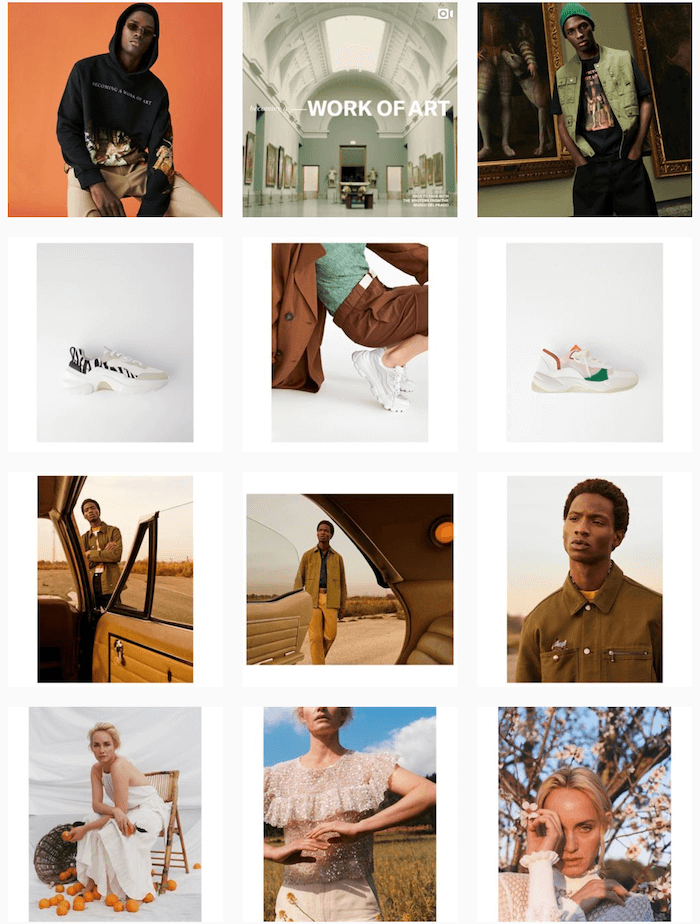
II. CREATE
How creativity matters?
There is such a thing as being overly creative, and then there’s creative that hits just the right note. So understanding the difference and understanding the meaning of “paralysis of analysis” is very important when building a brand.
We have seen brands try so hard to be so creative, and end up losing their customers’ desire. A creative brand should be simple and effortless. Do an extensive amount of due diligence to understand what your customers like in terms of your competitors and look at it from an outsider’s perspective without being emotional about your creations. Building a brand starts with creating products customers love and respect, otherwise, all your other brand-building efforts such as marketing, networking, etc, are going down the drain. Be as rational as you can here since your brand’s livelihood depends on it. It also doesn’t hurt to look at your personal belongings to see if what you’ve created belongs amongst them.
Every time you or others create a product on the behalf of your brand, ask yourself to see what it is about this product your customer would like. If you’re in doubt, then do a quick survey to learn as usual before you go into production. An example, if you built a brand that sells plain t-shirts, and now you plan to introduce a t-shirt with a graphic. Try to understand why the type of graphics your customer would like, look into your direct competitors, hire a professional graphic designer and make sure you set your brand up for success.
Again, check your customers’ needs first to make sure your decisions are not driven solely by your emotions. There’s no place for emotions when the object goal is to build a brand. Anyone can be a creator but those who know where to draw the line are the chosen ones, think of Steve Job (apple). Strives to learn to improve your creative skills. Do not ever listen to the cliché, “born to be creative”. You are either trained or untrained. Like everything else we discussed on how to build a brand, creativity also requires a learning curve. Be sure to learn all you can about creativity and continue to improve on your process so that you ultimately are of the same caliber as Steve Jobs. Most people confuse the principle of creating or creativity with throwing every idea they have, including the kitchen sink, into a new design. Whenever you’re creating, remember the KISS principle (Keep it simple stupid). Delight your customers with slight creative variations on items you know work…then slowly introduce you to more novel pieces as you grow.
III. ENGAGE
How to engage with customers to grow?
No, this does not mean to stalk your customer, silly…that is just weird and creepy. What this means instead is to take advantage of any opportunity that comes your way to invite positive interactions with your customer base, as we have discussed prior. Whether it’s customers reaching out to your brand or you’re doing a survey to ask specific questions to improve your brand-building strategies. Engage with your customers to learn to improve all areas related to your business, take advantage of it. Especially when a customer calls or tries to chat on your site.
Be enthusiastic and quick to engage with customers when an opportunity is presented as that is the fundamental part of your brand-building strategy, which will determine how well you succeed eventually. So do not ignore it when you see a call or reach out to alert. Also, use the engaging techniques of surveying we’ve talked about to best serve your customers by always asking different questions and topics to learn.
IV. REMINDERS
How to remind everyone why your brand matters?
When getting your brand message out to either customers or employees, the technique and approach on the “how” part need to be thought of separately. Remember to think before you act and know and understand that your customers are not your employees and your employees are not always your customers. Even though your employees could eventually become your customers they are first and foremost your employees, so they will have a different perspective about your brand’s mission.
So let’s dissect this into two categories as we delve into how we handle reminding others of your brand journey. Again, these are your two focus groups:
- customers
When it comes to your customers, the very first thing you have to take into consideration is how and what resources you have. Remind customers about your brand and services without being spammy or obnoxious. Best brand-building techniques that connect and give your customers a heads up include:
- in your promotional and your product
- in your email blasts
- in your marketing & retargeting campaigns
- in your social media
- once a customer completes the shopping
- when shipping the product
- & more
Keep these reminders to build a brand that respects others’ privacy and time. Find new subtle ways to remind customers about who you are as a brand and what your brand mission of value proposition is.
When it comes to your employees, on the other hand, this is where you can have some fun. You should keep reminding them of your shared mission at department meetings, or whenever you engage in the business conversation. If an employee comes to you regarding salary or a coworker issue, don’t make it about your brand mission. But if the conversation is about developing a new product, customer service, the general business question then yes, find a way to remind them.
Also, create different games and collaborative work amongst team members that work to improve your brand culture and mission. Sure, you do not want to be over-the-top and potentially annoy your employees doing frivolous exercises that take away from their valuable time. Still, they need to embrace your brand values & culture and get behind your mission fully. It is vital that you all, as a group, can work as a unit to push the brand-building effort forward.
It is imperative that you as a CEO honestly believe in your brand mission, and when you do speak about it, keep it brief but show much enthusiasm about it. Love what you do and show it. Don’t let your brand mission or value proposition end up as a page of words for the sake of having a mission (the old TLDR joke). Let your brand mission serve as a meaningful reminder of what is important to both employees and customers. You need to be able to articulate it in a couple of phrases, if not shorter.
Remember these brand examples?
- Reformation: Being naked is the #1 sustainable option. Reformation is #2
- Everlane: Radical transparency
- Facebook: Connect everyone
Keep in mind, this is probably not something you can concoct in one sitting as you start to build a brand. Let it be a living document that constantly reinvents itself until you get it ‘perfect’. Keep an open mind to learn from customers and employees. Keep it evolving in the back of your mind, trying to come up with a slogan that describes what your brand is trying to accomplish or something your brand will grow into along the way. Remember, when you do remind your customers and employees, keep it simple.
V. MOTIVATE
How to motivate your employees?
There is a fine art to motivation, and there is also overkill. So make sure you don’t go to the dark side, thinking you are doing something cool when instead you may just offer your employees distractions that they find annoying. A very simple way to increase motivation includes simple acts of appreciation, especially at the early stage of building a brand.
It is your job as a CEO to make sure you know who has done what task and how well. Take the time to reach out to that person and say a genuine ‘thank you’ and ‘I appreciate your hard work’. Take the best performers out for lunch to thank them, especially if you are in the early stage of building a brand. Ask about what ideas they have that can increase the brand’s success. BTW, don’t overspend on launch thinking this needs to impress them, being honest with your employees means more than being a show pony.
The ability to openly discuss anything in their mind will give employees what’s called psychological safety. Psychological safety is a critical force used by all great CEOs who manage to build a brand of great notoriety to date. Psychological safety gives employees the freedom to speak their minds respectfully without having to worry about losing their job. If that culture is established well, then it can be the greatest motivational tool a CEO will have to build his/her brand. Allowing every employee to speak out if there is something they see within the brand that could be improved is critical. Motivating team members is ultimately having lieutenants in the ranks that have your brand’s back at all cost. It is a critical tool to implement in brand building that will help to accelerate growth since they now feel they are accepted, and their opinions matter.
Another way of motivating the team is to ask employees what they would do if they were in your position. Remember this is not an ego thing, and you need any constructive criticism that you can get. Brand building starts and ends with you, so if you are not improving yourself, why would your brand? Inviting your employees’ opinions shows you trust their input and respect their perspective. You will be surprised how easily you can find what gets a person motivated without you trying so hard.
The most significant mistake made by many entrepreneurs is motivating employees with money. The most important motivational factor to positively influence employees is allowing them to be heard and appreciated.
3 DO’S
- Strategy
- Sells Channel
- Customer feedback
I. STRATEGY
How to create a branding strategy that will succeed?
Many first-time entrepreneurs building a brand make this mistake over and over by not thinking about the process. You must consider your brand strategy in whatever it is that you do and analyze it over and over. Here are a few things to keep in mind we did not discuss above but are critical as well:
- Keep in mind the big picture,
- Assess your goals by creating attainable milestones,
- See how your actions will impact your business, so plan well
- Understand your products unit economics
- Have a budget in place
- Have a marketing plan in place
- Create a way to increase employee performance
It is great to jump into testing your MVP (minimum valuable product), but soon you need to start creating time for putting together a strategy that will help you build a brand.
Frequently reflect on your current business goals to see if you are going in the direction you set forth for your brand, and how you can improve it. Perhaps if you are on track, then look at how you can accomplish even more. Think of a strategy like a roadmap that provides direction for going places you have never been. You know where you want to end up, but need to know HOW to get there. You could blindly get in your car and drive to a destination you’ve never been. That option will only leave you with hope, and hope is not a plan that can be measured. If you can measure it then you can manage it, otherwise, you will be going in circles forever. A better option to building a brand is to turn your navigation (strategy) to understand how long it will take, where is the best option to get there. It is essential to always look for strategies to get you there safer and a little faster, each time slowly increasing velocity. Know that if you are a first-time founder, it is critical to have this written down and well-articulated, so you can visit and tweak it each time.
Draft thorough lists of brand goals, set up calendar dates you project to achieve these goals, and most importantly a step-by-step process on how you are planning to achieve it. Identify where your weaknesses are, so you can join our podcast, other podcasts, and events to learn more about the topic of your interest. Validate your success by going back to cross-reference and checking your progress.
What if you’ve managed a small brand before? If you have built a successful brand once or twice before, then you may not need a strategic plan in the beginning as the direction you’re going is something you are very familiar with. If you are reading this blog and taking your courses, that means you are either a small or a medium-sized brand that is building something great from the ground up, so make sure you invest time in long-term strategies.
Our advice is to learn 60-70% of all the different positions your brand requires since you will be the one doing all of these various tasks in the beginning. Knowing the positions will eventually help you hire the right candidate since you know the skills required to successfully do the job.
Learn to scale in areas such as design, marketing, customer service, logistics, and more. Into a short but very articulated five-steps, write down the process for each department, whatever you think is essential and crucial to focus your energy on to start. You need to dive headfirst into each role required to run your business, so you build experience in each part of the process we’ve listed. You can begin to remodel it, which will incrementally improve and form something of great value.
II. SELLS CHANNEL
How to choose a sales channel to build a brand?
There are a couple of options that we have listed below that articulate what most brands do and the systems they used to generate sales. The first approach we will be discussing is called direct-to-consumer sales.
Direct-to-consumer sales
A direct-to-consumer model is a sales model that cuts out all the middlemen and goes direct to consumers. In today’s world, it is done through e-commerce as the Internet is the most vital tool for modern-day commerce. It requires understanding how the process of direct to consumers works.
If you want our advice, we would highly suggest first go through the direct-to-consumer before starting to think about wholesale. It is vital to building a brand direct to consumer sales model since this is what is in store (no pun intended) in terms of where commerce is heading nowadays. Direct-to-consumer is the present and future of commerce-related business. Best to keep this in mind when you are trying to build a brand. We’ve elaborated on the step-by-step process on direct-to-consumer where you can learn more.
building
Wholesale Distribution
Wholesale, on the other hand, is a sales practice that has been around for a very long time, and very few brands have managed to execute it successfully. Because of the rise of direct-to-consumer today it is becoming tough to succeed with a competitive edge as a brand-building wholesale business. Since there is a third party involved that increases the product price significantly, it takes away the edge a brand needs to compete.
Many assume but do not understand how expensive also the wholesale market is. The truth is, it’s probably going to drain your bank account very quickly if you do not have a plan on how to proceed and a significant capital to support it.
There are fees like the following:
- Showroom fees paid to your distributors average around 15-30% of your total sales. And showroom rents per territory vary between $500-5000 monthly
- Wholesalers margin, a 55-65% percent of your retail price (since retailers expect to make between 225-300% markup on brands they carry)
- Trade-show fees ranging between 5k-50k a show (on average there are four shows a year, two in Las Vegas and two in New York)
- Small local shows that your distributor needs to attend to generate sales, which may average around $1000 a show (on average there are about 15 a year)
- SaaS (software as a service) streamline the process for your wholesale business, which your business and your distributors will need
- Prototyping for each distributor, you will need to provide it for free of charge
In wholesale, distributors or showrooms need to show all the different types of products to see what buyers want. The process goes on for a few months in advance until you “cut off date,” and then you will begin production to fulfill the order. Therefore, having a sample of each product you’re offering your distributors to sell for each territory is mandatory.
Our job is to paint the full picture, so you begin to understand how one side of the business works. This ensures you can make a calculated move based on an honest evaluation rather than wishful thinking or dangerously wrong pieces of information you have gathered who knows where.
The way to make money wholesale is to push high volume. It takes time that your distributors will likely need to present your product to the buyers and for the buyers to find the confidence to start to carry your items. Therefore, give yourself a 6-month time frame to begin to see small value orders here and there. Followed by another six months before starting to build momentum, and 6 months after that to get the ball rolling. It is a more realistic way of setting your goals in a wholesale business. Only very capitalized brands can get proper distributors and can move faster in wholesale. We’ve elaborated on the step-by-step process on how to go about wholesale where you can learn more.

III. CUSTOMER FEEDBACK
How valuable is customer feedback?
Don’t be too hard-headed thinking you’re Steve Jobs. Instead, come back to reality and learn to talk to your customers to understand their needs. There is an old saying that customers are always right. Still, there is also something Steve Jobs once said that gets thrown around in the entrepreneur’s circle without being fully understood.
He said:
“Some people say, ‘Give the customers what they want. But that’s not my approach. Our job is to figure out what they’re going to want before they do. People don’t know what they want until you show it to them. That’s why I never rely on market research. Our task is to read things that are not yet on the page.”
Henry Ford shared the same idea when he once said, “If I’d asked customers what they wanted, they would have told me, ‘A faster horse!”
Before you psych yourself out for no particular reason here are a few pointers that will truly impact what a great entrepreneur you can become.
- Brands should treat customers with the utmost respect and politeness because, let’s face it, without customers your brand is irrelevant. So if you ever think your items are so special, and therefore customers are at fault, this will guarantee a failure. Even if the customer is wrong, you need to be better at listening, identifying a problem, and doing your best to fix it for them.
- Second, Steve Jobs had an engineering team and product team of nearly a thousand individuals who spent decades perfecting the products. Note that they always did a case study, and talked to their customers to improve every aspect of the iPhone or iPad before launching. All their effort at the end gave their product a much better chance of being loved by customers. So unless you have this level of budget, time, and resources, come back to reality and begin every interaction with possible humility.
Sorry to spoil it for you, but when it comes to lifestyle products, everything under the sun has already been created. Your brand mission is to marginally improve on the product but most importantly to form a strong relationship with customers.
Given the scope of what is attainable at the stage that you are in with your brand, slowly and surely improve the process. You will build a multi-million dollar business guaranteed s…eventually. If you don’t take customer feedback seriously, think you are better than your customers, then we guarantee you will fail.
Remember the reason you know of Apple it’s because they’re so damn large. Apple is worth a trillion and growing, but many multimillion-dollar brands are doing exceptionally well. When you first embark on your journey to build a brand, most people don’t know who you are, therefore you need to be attentive to your customers’ needs. Take your time to build your empire brick by brick and always be open-minded to learn.
Also, here are some survey questions to get you started on building your Q&A sheets for your customer feedback. Again this is your chance to learn how to improve your services and products:
- What is about your product and brand they like?
- What can you do to better serve them?
- What types of products would they like to see from you?
- What types of colors if that is an option for your product?
- What more can you do as a brand?
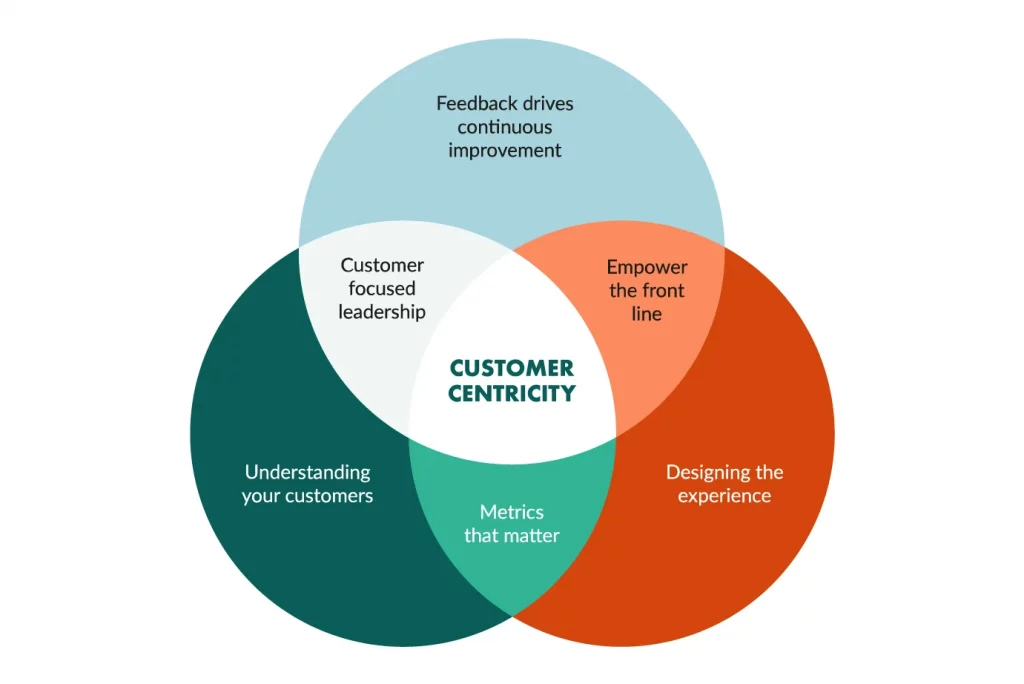
It is crucial to find a way to recruit your most engaged customer early on and build a healthy relationship. In time, they will become your brand ambassadors. Put all emotion aside; learn what they truly want before you march to the beat of your drum. Simply provide excellent customer service, always be available, always be attentive, and take your brand to victory lane.
3 DON’TS
- Excess Inventory
- Overspend on Marketing
- Be a bait
I. EXCESS INVENTORY
How excess inventory kills brands?
Common mistakes we see with startups trying to build a brand involve the urgency to scale too quickly. Most of the time this strategy can leave you in the ditch so best to take your time to build your biz, in the beginning. A great example would be overspending on buying large inventory without having any data or customer base to justify that kind of expense when you are just starting to build your brand. Over-inventory kills businesses more than anything else or negatively impacts your capital. AVmade solved this problem for our entrepreneur completely.
To start with, in order to properly evaluate the amount to stock, you will first begin your business as we have discussed prior by either:
- Surveying to learn what works amongst your products or
- Investing a small amount of capital in getting those pieces made
- Test those pieces on the market
Once sales start to move amongst those few pieces, then you can double down on winners and move away from the rest until you build up bestsellers and customer base simultaneously. So inventory management goes hand-in-hand with the number of loyal customers you build in each transaction. As the number of customers you have grows, so does the amount of quality to produce then hold at a given time.
To show you a little analysis of what that would look like, say you have created five products,
- You created a prototype based on customer survey or not, then did a photoshoot, advertised, and promoted a little to see which one of those five products customers wanted from your brand. Thereafter, you go into production with winners.
What you are looking to do when starting to build a brand is to understand where there is growth across the board for all products before you spend a substantial amount of dollars. Products showing the best performance, you will double down on and other products with slow growth need to be dropped like a hot potato. Focus your brand-building effort on high-growth products and only double down on the products that are selling well. Also, the exponential curve is crucial to understand as it will tell you when to double down on the products and when to slow down even on bestsellers. Following the momentum and the demand curve will be crucial to learn as you build sales.
These are key indicators for you to continually look at in terms of projection and data to make the right decisions. If the curve slopes down but at one point stabilizes instead of selling 50 units a week, you are now selling ten a week consistently. That means you get in a quantity that you can keep replenishing every four weeks and also time to consider refreshing your product’s palette. By refreshing your palette we mean, if you were in the apparel or beauty industry for example then you will bring more color choices to bestsellers. As long as there is a demand for it, you can always sell until there is zero demand. Also paying attention to these exponential curves gives you a heads up on when to start to develop your next ideas.
The best time is when you have a product or two that has begun to do well before showing any pace of slowing down. It gives you an idea of what is working, so you can continue to develop around more of that in,
- indifferent colors
- complementary products
- & more
II. OVERSPEND ON MARKETING
How to avoid overspending on marketing?
There’s no question when you first begin–you should focus your energy and time strictly doing nothing but organic marketing. If you start with paid marketing hoping for an expedited result without having a strategy in place and learning thoroughly how marketing works you run the risk of failure. You will probably need to:
- Exhaust all your resources and efforts every day to gain organic traffic.
- Do not hire a digital marketing person before you learn how digital ads work
Blindly going into marketing when starting to build your brand is a recipe for disaster. So take your time to learn the process yourself with a very controlled budget if you have to and grow your budget incrementally between 2-5% as you see great results.
We saw brands die quickly with an initially bright future because they got carried away. Brands that started on shaky ground but made slow and calculated changes over over-time will last. They changed their outcome for the better, so take your time, do it right, and learn the process. We’ve elaborated on the step-by-step process on how to go about digital marketing.
III. BE A BAIT
How to make smart decisions?
Avoid anything and everything that seems too good to be true. There is a saying, “if something seems too good to be true, it probably is.” Many will sell you a dream in a box to get into your wallet. Some marketers have invested their life doing YouTube ads in pursuit of your wallet. Most showrooms promise sales but will tell you to be patient for 6-12 months before you see any results. That is just someone selling you a dream in the box.
Some shamelessly lie and say they made millions for others and how so-and-so is killing it using their service blah blah blah… Entrepreneurs who lack focus and a reality check always find themself throwing money on these get-rich-quick schemes.
These scums are taking advantage of your desperation, some are making so much money by being an expert in ripping people off. Their YouTube or IG ads look better and more convincing than a multi-million dollar corporation. Please try not to fall for the glamour and take your time to do and learn the process yourself first.
Remember, if you need a reminder tattoo, may we suggest the following: “nothing will ever come without your blood sweat, and tears, that’s entrepreneurship.” As a leader, it’s your job to understand it all. We mean understanding and doing extensive due diligence in all aspects of your business, product development, marketing, sales, customer service, and everything in between. You learn it and learn it well before you decide to hand it over to someone.
Hire someone once you understand the job you want to assign them because you no longer have time to do it as something needs more of your attention. When you bring someone in to do a particular job, make sure you outline the tasks, milestones, and expectations you have of them. Your business is not a hangout joint, but a place where each individual contributes significantly to grow and achieve excellence.
The flip side of this is, imagine trying to hire someone whose jobs and tasks you barely understand, what then? Another recipe for disaster; we can tell you exactly how this will go. You will hire her/him to spend the money you should not have spent in the hopes of building a brand by some miracle. Eventually, you will be frustrated, not feeling like that person is contributing much, but you don’t know how to evaluate that person properly or help them be their best since you too don’t know what to do. You fire him/her, and if you’re looking for more miracles, you keep doing this until you run out of money.
You need to know 60-70% of all employees’ requirements before you hire. Do take this to heart. Well if you’re lucky you still have a little money left now you’ll just have to start over. If not, no worries, time will kill your biz. The lesson here is, don’t be lazy and stop the wishful thinking, take your time, and learn to build your brand in baby steps.
Learn and make all the mistakes yourself first. Since you are free labor for your brand.
CONCLUSION
There are many paths to success, but some ways are temporary and out of the current norm. In contrast, others look further to the future to follow the inevitable market dynamic. Entrepreneurs whose approach is calculated and long-term in mind will keep an eye open and be hands-on in all their business processes from the beginning as they build a brand. We strongly suggest you continue to learn all we discussed above, as we would love to see you achieve greatness.
And make sure you stay ahead of the game as well as on-trend so your customers’ loyalty can always remain intact. We are building a brand just like you called AVmade Design Studio with the elite factories in the U.S. to give savvy entrepreneurs like you an advantage and an edge over big corps. Factories offer the best quality products at low MOQ and any type of customization you desire.
Hopefully, now you can allocate your time to marketing, customer service, and building a brand. Our mission is to inspire entrepreneurs and empower factories. We want AVmade Design Studio to be an ecosystem to support small businesses.
We’d love to support you in any way we can, and we also hope you become our brand ambassador. Contact us if you have any questions and stay tuned in for more.
Clothing Manufacturers In The USA Cost







